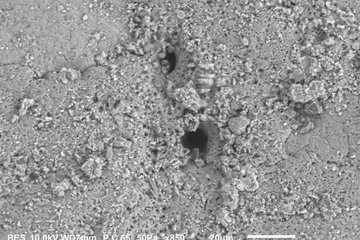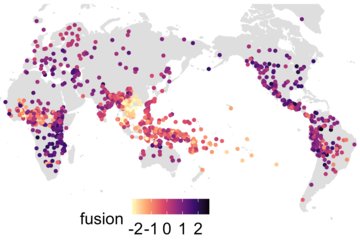On the path to symbiosis
Researchers discover how microbial cooperation can emerge
Max Planck scientists in Marburg have used a synthetic microbial community to study the gradual evolution of mutualism. The study demonstrates for the first time in detail how an evolutionary loss of independence can occur in communities of different groups of organisms.

Mutualism, an association between organisms of two different species that benefits both, is widely recognised in animals and plants, but also plays a crucial role in the microbial world, where diverse species often live in close association. These microorganisms often form communities that are characterized by the exchange of metabolites. But how does cooperation evolve over selfish behavior? Previous knowledge relied mainly on evolutionary "snapshots" of existing natural symbioses, leaving the mechanisms that drive the gradual erosion of independence in such communities largely hypothetical.
A team of researchers led by Victor Sourjik from the Max Planck Institute for Terrestrial Microbiology in Marburg, Germany, set out to unravel the mechanisms underlying the evolution of microbial mutualism by replicating this process in the lab. They constructed a synthetic community between a prokaryotic partner (the bacterium Escherichia coli) and a eukaryotic partner, brewer´s yeast (Saccharomyces cerevisiae) and let it evolve under conditions where the partners could only grow together. “Our interkingdom consortium of bacterium and yeast is an ideal model due to the well-understood metabolism and gene regulation of both organisms. Notably, many natural symbiotic interactions also involve eukaryotic and prokaryotic partners, making this model particularly relevant”, says Giovanni Scarinci, first author of the study.
New level of interdependence
Through the course of experimental evolution, the team observed not only the strengthening of engineered cooperative traits but also the emergence of a new level of interdependence between members of the community. "We found that the yeast partner became highly dependent on its bacterial partner for nitrogen metabolism - a phenomenon that is common in natural symbioses," explains Giovanni Scarinci.
A comprehensive analysis showed that the selection for mutual benefit occurred repeatedly in an indirect way: traits that promoted cooperation appeared to be linked to others that provided a benefit. The researchers found that this was due to both pleiotropy (a gene affecting multiple traits) and trade-offs (one trait cannot decrease without another increasing).
“While pleiotropy has been suggested as an important factor in maintaining existing mutualisms, our results show that it can also drive the evolution of new mutualistic interactions,” says Victor Sourjik. “In contrast, we could not see evidence for group selection, the commonly postulated mechanism behind the evolution of mutualism”.












